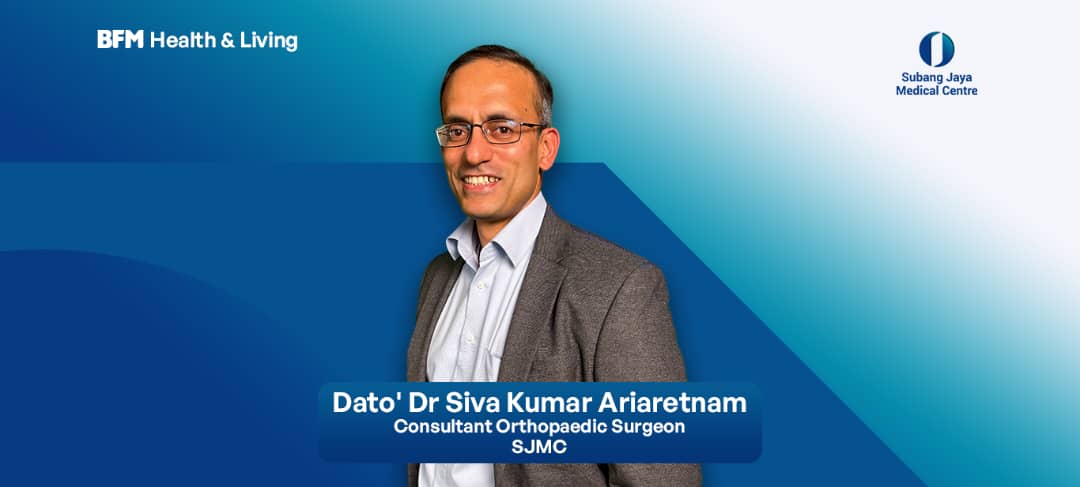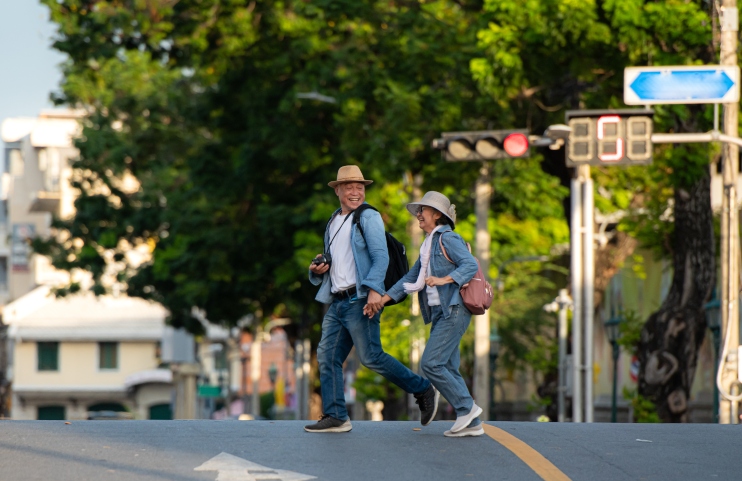
According to a recent study by the Malaysian Elders Longitudinal Research (MELoR), almost one in three older adults has symptoms of knee osteoarthritis. This is one of the most common conditions leading to the need for knee replacement surgery.
In this episode of Health & Living, BFM Producer, Tee Shiao Eek, speaks to Dato' Dr Siva Kumar Ariaretnam, Consultant Orthopaedic Surgeon from Subang Jaya Medical Centre, about how knee and hip replacement surgical methods have advanced today to reduce pain and improve recovery.
“I’m a surgeon so I know how to cut but that is probably not the first thing that you want to do. There are a lot of things you can do before surgery especially when you address them early. The most important thing is doing strengthening exercises. People tend to have this assumption that if you have a damaged joint, you have to limit movement, but you need to keep maintaining strength in the joint.
“People also underestimate the effects of body weight. A gain of 1kg can accelerate joint deterioration by 5- to 10-fold. These days we are not talking about weight anymore, we are talking about body composition as two persons with the same height, weight, and gender may have different muscle volume. Keeping a lean body mass is important step in maintaining your joints,” he shared.
Seeing a healthcare professional is important to understand your disease and what you should and can do to delay the disease. There are conservative methods such as managing your body weight, doing exercises that are specific to your pattern of arthritis, oral supplements, temporary or long-term aids and braces, and in further stages of disease, you can get injections such as hyaluronic acid, steroids, platelet-rich plasma (PRP) and stem cell therapies.
“One of the most important things doctors should know is not when to do surgery but when not to do surgery. If I did a surgery on someone who came in on a wheelchair, who couldn’t get out of a wheelchair, regardless of how bad their arthritis is, they are not going to get out of the wheelchair. There are two components – the arthritis and you delaying the arthritis. When you get to that stage, you would have damaged other joints, and we can’t work magic at that point. That is very unfortunate before you come in,” Dr Siva said.

There are surgical techniques which have improved over the years and surgical technologies that have come in. “If I was told 20 years ago when I started that I would be able to do what I do today, I wouldn’t have believed it. I started using computer navigation, but it doesn’t really improve things. For a layperson, it is easy to convince them that computers are superior, but it had its own challenges. I discarded it after a couple hundred of cases. Then we came up with patient specific instruments. It was good but it was inflexible and there are no two persons alike. The latest buzz is robotics, and I think robotics is the way to go.”
Dr Siva has done more than 200 robotic joints, both single and bilateral, which he has had zero infection and zero reoperations. It is an established fact that transfusion increases the risk of infections and looking at the literature of transfusions anywhere in the world, the lowest transfusion rate for a bilateral knee is 30% – and Dr Siva has transfused only 1 patient for single knee, and 1 out of 18 bilateral knees.
There is a saying that “oozing is ubiquitous to knee replacement” which means it will happen and it comforted many surgeons in the early days. “However, in the last 100-150 patients, I do not open the dressing until 2 weeks, sometimes 4 weeks from the operating room. The only time I take it off early is with international patients. So, I’ve had no oozing, and I have debunked that myth that you have to have oozing. Robotics has definitely contributed to this,” he said.
“I can’t promise you a 100%; no surgeon will say it is a 100% okay. I think it is good to get multiple opinions. Be absolutely sure you want to have this done. I can tell you what our numbers are and you come to an informed decision. But don’t live with pain because when you have one knee pain and you don’t get it addressed, in three years you’ll have your other knee go bad and then your hip and back. People live to their 90s these days and they are travelling; having good quality of life and there is a way to do that. You can move on with a good quality of life," he said.
Source: BFM
